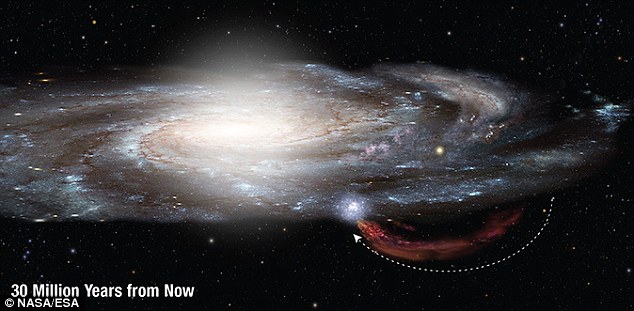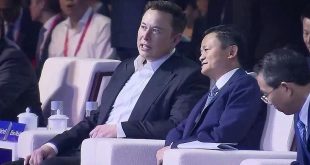By: Andy An
Scientists have discovered that a massive gas cloud is hurtling toward us at over 700,000 miles per hour. The Smith Cloud, discovered by the Dutch astronomer Gail Smith, is a massive of cloud of gas which has enough mass to produce 2 million new stars.
Though this gas cloud moves more than 400 times faster than a bullet, it is likely nothing to worry about. As an expert explains, “It’s one of many high velocity clouds orbiting the milky way.” Not only that, it is unlikely the gas cloud will have any impact on our solar system because the distance between stars in our galaxy is very large. Even if the gas cloud passed directly through our galaxy, the probability of it disturbing our planet is astronomically low.
There are two theories about how the cloud came to our home galaxy. One theory is that the cloud simply originates from intergalactic space, and just so happened to come in the direction of our galaxy. However, a different theory suggests that the gas cloud actually originated from our own galaxy. This second theory states that some time in the past, the gas cloud was ejected from our galaxy, and has slowly been drawn back in due to the Milky Way’s gravitational pull.
This second theory has been supported by NASA, which stated, “New Hubble observations suggest [the cloud] was launched from the outer regions of the galactic disk, around 70 million years ago.” As scientists studied the cloud, they determined that the composition of elements in the cloud are very similar to the composition of elements in the outer rim of the Milky Way. Thus, it is very probable that the origin of the gas cloud is in fact our own galaxy.
According to a leading scientist of The Space Telescope Science Institute, “Our galaxy is recycling its gas through clouds, the Smith Cloud being one example, and will form stars in different places than before. Hubble’s measurements of the Smith Cloud are helping us to visualize how active the disks of galaxies are.” This is an example of how our galaxy changes through time.
When the Smith Cloud hits, the impact will compress the gasses enough to trigger a spike in star formation. However, the cloud likely won’t crash into our galaxy for another 30 million years.
 Tempus Magazine By Students, For Students
Tempus Magazine By Students, For Students 



